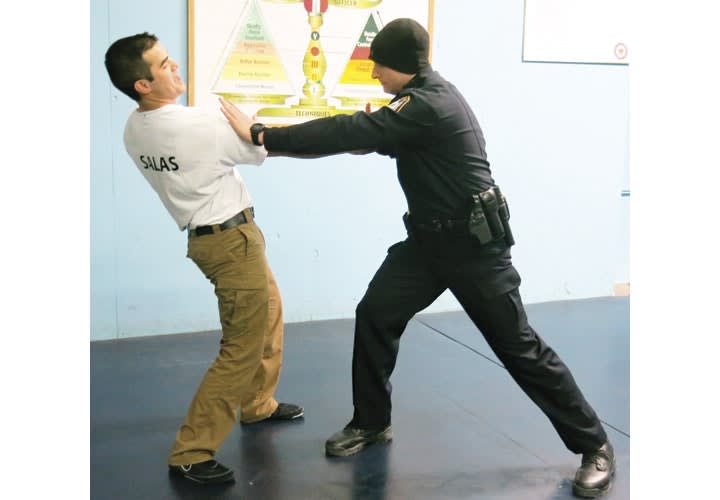Once the attacker cooperates and is proned out, wait for backup before attempting to handcuff him, even if this means waiting for quite some time. It can be extremely risky to attempt to handcuff someone who was attempting to disarm you because it could trigger a second fight, maybe even another fight over your gun.
There are many techniques and useful tactics for handcuffing such a high-risk arrestee. Considerations when prone cuffing include: approaching safely, gaining control, and cuffing. Options include having a cover officer approach the subject with a firearm out while the cuffing officer holsters his or her firearm. If the officers approach together on the same side and remain at the same distance during the approach, then the risk of crossfire is reduced. Once the officers have approached the arrestee, then the cover officer should remain standing with firearm drawn, while the cuffing officer gains control of the arrestee. As always, the arresting officer needs to check the cuffs for proper fit and double-lock them. The arresting officer may then conduct a search while the arrestee is on the ground and can always conduct another search once the arrestee is standing.
Preventing a gun grab is easier than stopping one. Remain aware of your surroundings and habitually maintain a safe distance from anyone with whom you are interacting. And remember to keep your weapon side back and your hands above their waist.
However, even if you take every appropriate precaution, you can still be attacked by someone who is determined to take your gun and use it on you. So practice weapon retention drills to prepare for the worst case scenario.
Dr. Michael Schlosser is a retired lieutenant with the Rantoul (Ill.) Police Department, director of the University of Illinois Police Training Institute, and the Institute's lead control and arrest tactics instructor.











